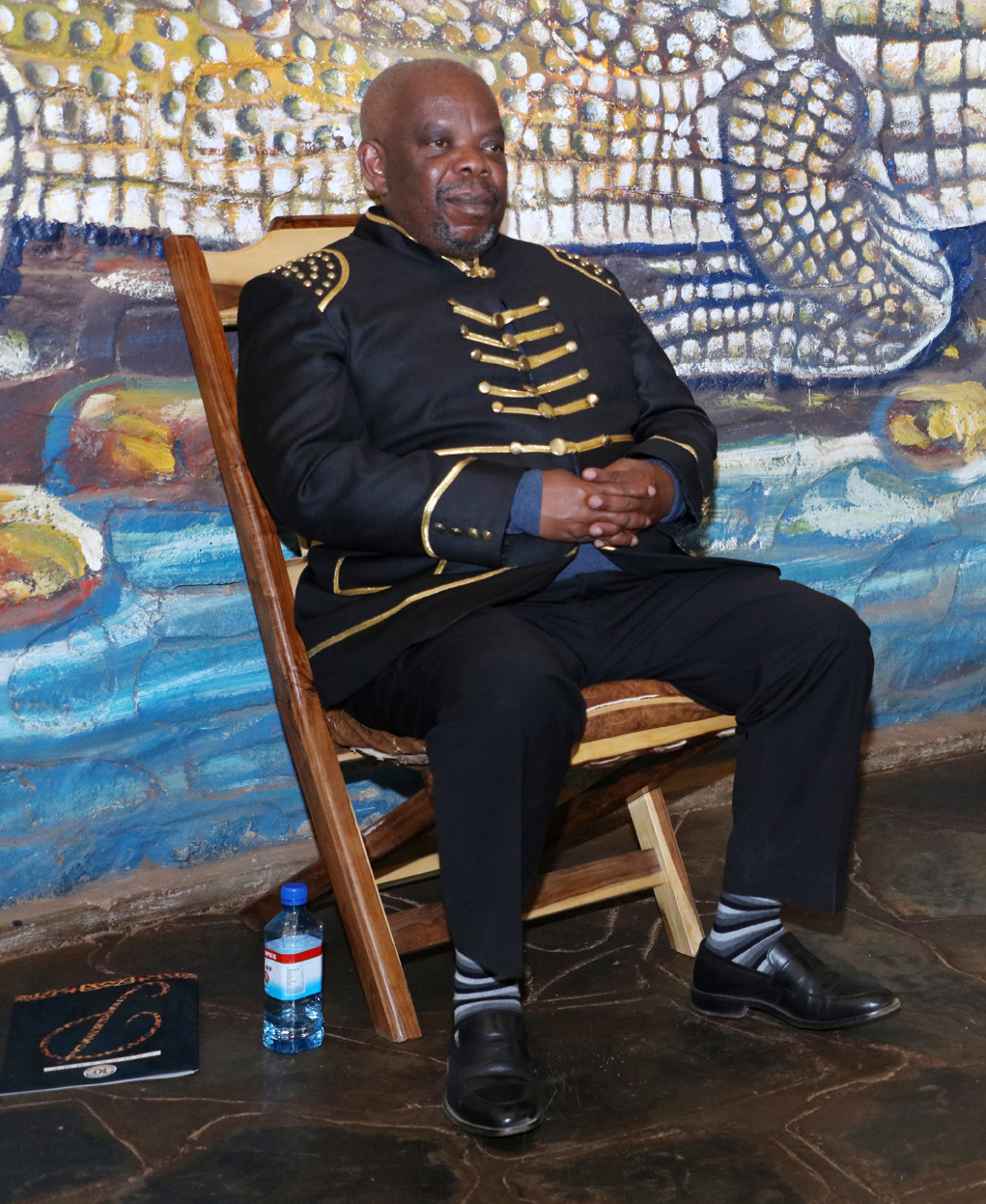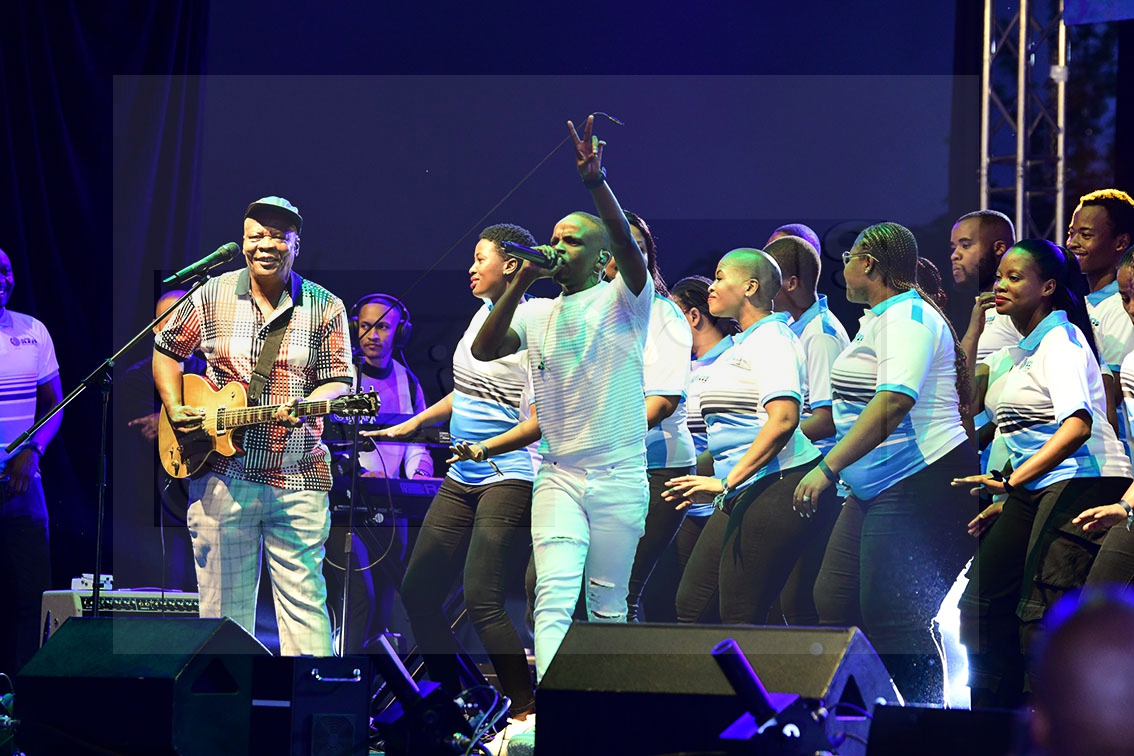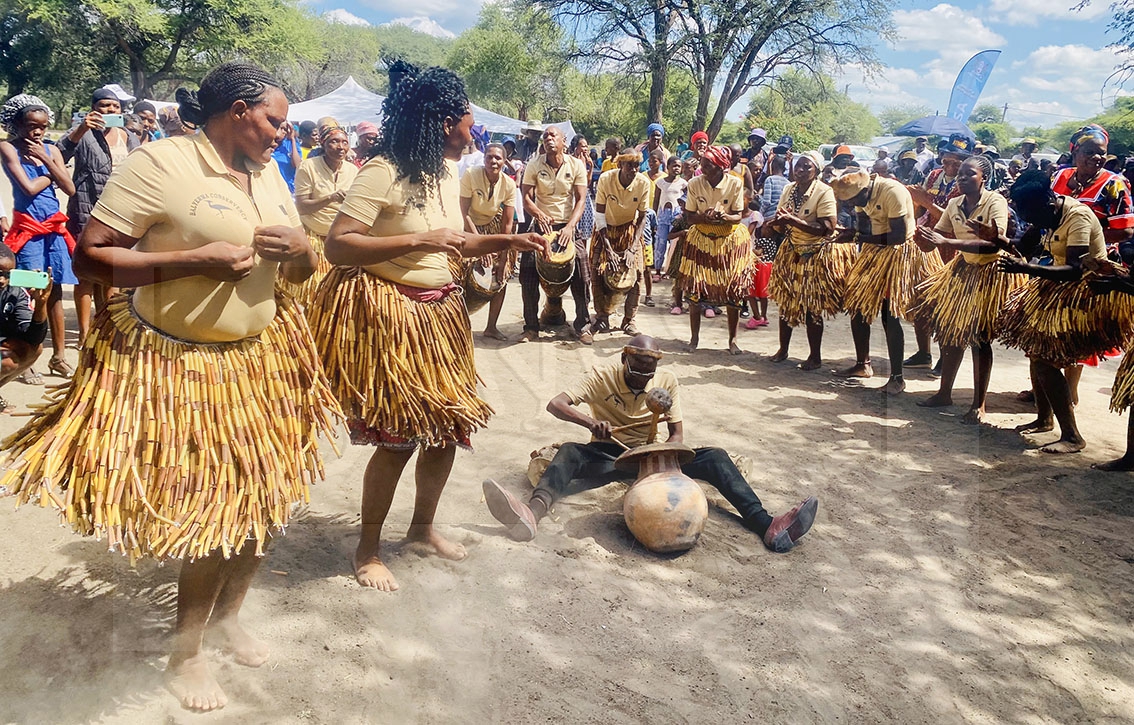A glimpse into Ga-Ngwaketse royal wedding
05 Oct 2022
It will be rich Sengwaketse marriage culture tommorrow when Kgosi Malope II brings the Queen home. Kgosi Malope II’s wife is from Lesotho and the second leg of the wedding will be held at Mmakgodumo Gardens in Kanye. It is expected to fully epitomise and celebrate the rich culture of Ga-Ngwaketse seeing the groom is the paramount chief.
Bangwaketse Deputy Paramount Chief, Kgosi Kebapetse Telekelo said in an interview that they will not disappoint, adding that the event will have a full line-up and variety of the well-known Ga-Ngwaketse marriage culture and pomp.
Kgosi Telekelo says in then build-up to the big day, leaders of different GaNgwaketse mephato (initiation groups) convened meetings to plan not only how to best portray their culture but stage a wedding ceremony befitting a royal. He said they also brainstormed how to contribute to the wedding celebrations. He saw Bangwaketse came to the party as they saw an influx of contributions, in cash and kind, to ensure the success of the event. He says the wedding celebrations will indeed be a ceremony befitting a leader of Kgosi Malope II’s calibre. Kgosi Telekelo was not keen to dwell much on “who’s who’’ on the invitation list, except to say preparations were on to give the royal couple a high profile event and display the Sengwaketse culture.
He says Ga-Ngwaketse royal marriages are not different from those of the general populace of Ga-Ngwaketse, except for its pomp and prominence.
Highlighting the formal procedures he said Tseo ya Sengwaketse e simololwa ke batsadi ba mosimane ele bone ba ba isang mafoko ko Gorra-mosetsana. Go ya mme le rre ba ya go kopana le mme le rre ko ga mosetsana mme ere morago ba sena go isa mafoko batle go bolelela bo malome gore kana setlogolo sa bone se bone mosadi, mme se a nyala, ebile ba setse ba tswa go kokota ka kwa, mme ba kopanele morwalo wa tseo”. This means marriage negotiations are initiated by the groom’s family engaging the bride’s family on their intention to marry their daughter and thereafter uncles from both sides would be engaged to lead the processes.
He says as it was common practise, according to both Sengwaketse and Setswana custom, live cattle are the most recognised brideprice but in some instances money equivalent to the agreed number of cattle might be proffered to or rather preferred by the bride’s family. He says such cattle are accompanied by a ram called Lengwaelo or Mokwile in Sengwaketse. Lengwaelo literally meaning scrubbing, as its skull would be used to scrub hides to make leather mats/carpets.
A cultural pundit, Mr Daniel Kelosiwang shared some anecdotes with regard to the Ngwaketse culture, saying in the olden days morafe would scout for a wife for a chief in a family that also had royal blood, a process that was mainly led by the father and uncles.
He said according to culture morafe should contribute cattle to give their Kgosi the best marriage that would leave a long lasting legacy for generations to come. Mr Kelosiwang says from the lot, some may be used to pay lobola and the remaining would be used to look after his family.
He was of the view that for Kgosi Malope II’s wedding, contributions may be done in monetary forms that are equivalent for one beast each person given that it would be expensive to transport cattle to Lesotho.
He said Magosi and dignitaries as well as people from all walks of life were expected to grace the event. The wedding traditions of Batswana are unique, colourful and enjoyable, with all allowed to attend. One can only hope and pray Bangweketse put their best wedding cultural foot forward as they celebrate and receive ‘their mother’.
Meanwhile, research illustrates that the Setswana marriage is considered to be one of the most important institutions in the society, and in most instances, determines one’s status in the community.
Bride-price being the common practice among the Bantu-speaking peoples of southern Africa, leading to similarities in custom for people living in Botswana, Zimbabwe, South Africa and Namibia.
These traditions are discriminatory though as men and women, who are considered of age, but are not married, are not allowed to attend events relating to marriage. For example, they were not allowed to attend the ‘patlo’ ceremony where potential in-laws would visit the bride’s home to ask for her hand in marriage. Unmarried men of age would also refrain from speaking in public gatherings for fear of humiliation.
According to the custom, elders arranged the union between the boy and the girl, with the young man’s paternal uncles looking for a good family and identifying a beautiful girl for him to marry, with or without his consent. A good family here would refer to one that had no history of drunkenness, irresponsibility and witchcraft. A beautiful girl, on the other hand, would be one whose prudence outshone her physical beauty.
As boys and girls approached manhood and womanhood, they were sent to separate initiation schools to prepare them for adulthood. The boys would be sent to ‘bogwera’ where they would be schooled on manly duties, societal responsibility, marriage and how to be responsible heads of their families.
The girls on other hand would be sent to ‘bojale’ where they would be taught how to be responsible women in society and coached on what marriage entailed.
Patlo is one of the wedding traditions of Batswana that is still practiced today. Once the desired woman is identified, the negotiation process begins. A delegation from the young man’s side is sent to the potential bride’s family to ask for the young lady’s hand in marriage.
Go batla mosadi as popularly known is a wedding process that is long, but enjoyable. The young man’s family is expected to appease the girl’s family with a variety of gifts. They are also expected to display courtesy and humility towards the girl’s family through the negotiation process.
Bogadi is negotiated after the two families reached an agreement concerning the marriage of their children. Cattle remain the standard unit of bride price. In some instances the amount of the bride price would depend on her beauty, educational background, family background and good behaviour.
The actual wedding ceremony, takes place at both homesteads, with cattle slaughtered aplenty, and enough traditional beer brewed for the celebrations.
The wedding celebrations would start at the bride’s home where all the guests would sing wedding songs, ululate and eat to their fill. After this would come a handover ceremony at the boy’s homestead, followed by another feast. BOPA
Source : BOPA
Author : Keith Keti
Location : KANYE
Event : Interview
Date : 05 Oct 2022







